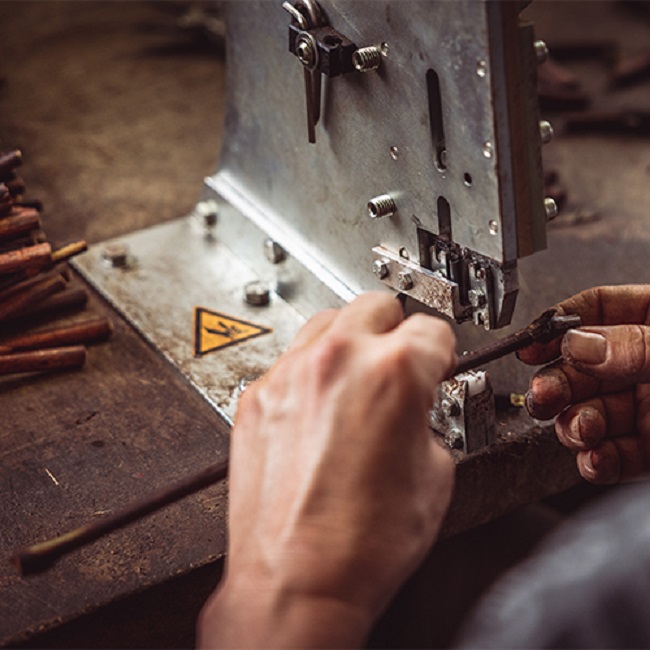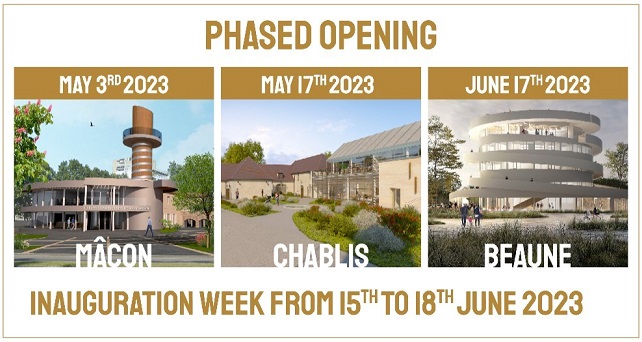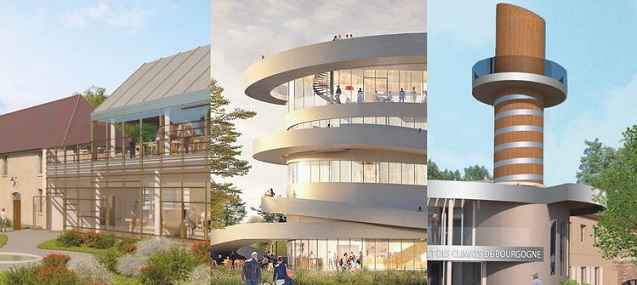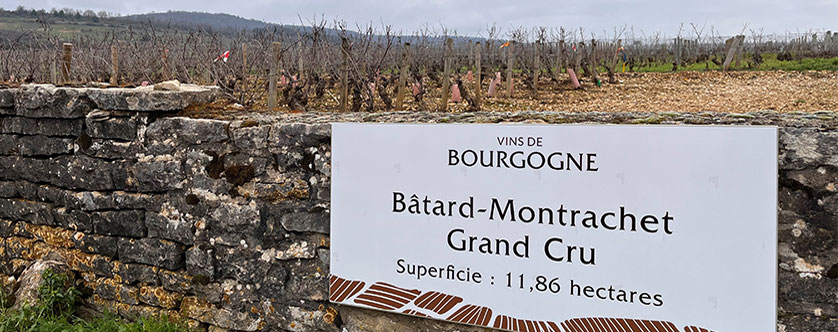The region has also earmarked €200,000 for a project on rootstocks, in preparation for further global warming.
Research: Bourgogne’s rootstock trials
To help with the challenge of climate change, the Bourgogne Wine Board (BIVB) is piloting a large-scale project to test rootstocks.The GreffBourgogne program aims to test them across Bourgogne’s full range of microclimates. In the long term, it will allow winegrowers to choose the right rootstock for every location.
The program has three key thrusts, the most visible of which is the creation of observation platforms throughout the region. A first plot was planted in Beaune on the Côte d'Or in the spring of 2022, comprising Pinot Noir and Chardonnay vines. A further two plots of Aligoté and Pinot Noir followed last autumn, in Aluze and Rully. A third plot of Chardonnay will be planted in Lugny this spring, with another Chardonnay plot planned for the northern part of Bourgogne in 2024.

At the same time, researchers from the Chambers of Agriculture, the Groupement d'Etudes et de Suivi des Terroirs and the Association Technique Viticole de Bourgogne are also studying selected volunteer vineyards, where plots have been planted with different rootstocks according to experimental protocols.
The project’s third thrust involves more than 20 wineries that are taking part in the project, following autonomous observation protocols on their own plots.
“We are expecting new results every year, because each campaign will be a source of learning,” explains Héloïse Mahé, project manager at the BIVB. “This program will run for at least 10 years, but the results will be published annually to help winegrowers choose their rootstocks. We will wait until the end of the 2023 campaign – the second year of observation – to publish our first results.”
This project has significant input from across the region and enjoys a budget of €200,000 for the first three campaigns (2022-2024).
Tourism: Cité des Climats et Vins de Bourgogne prepares to open
The Cité des Climats et Vins de Bourgogne is nearly ready to open its doors in Beaune, the capital of Bourgogne wines, Chablis, the region’s most northerly gateway, and Mâcon, its most southerly one.The official opening of the three sites – which are designed to showcase the culture and history of the local wines – is scheduled for mid-June, with preview events in Chablis and Mâcon in May.

May 3: Preview of the visitor experiences at the Mâcon site.
May 17: Preview of the visitor experiences at the Chablis site.
June 15, 16: Inaugural ceremonies for financiers, industry and tourism professionals, and press.
June 17, 18: Opening of the Beaune site to the general public with a series of celebrations across the network (including Mâcon and Chablis).
These occasions are going to be an opportunity for the BIVB and the Cité des Climats et Vins de Bourgogne to celebrate the Bourgogne winegrowing model. Guests from the world of wine, from other wine regions in France as well as abroad, are due to attend the ceremonies and recount how the terroir-based Bourgogne model has inspired their approaches.
In addition to the discovery of the three Cités, they will participate in a panel discussion on the theme ‘Bourgogne, a world model of terroir-based viticulture’, enjoy dinner in an iconic location and take part in a vineyard excursion in the Côte Chalonnaise.
At the three sites, visitors will learn about the work in the vines, the art of vinification, the patchwork of terroirs, the Climats, the varietals, and the notion of the Climat, which is the cornerstone of Bourgogne’s winegrowing model. They will also discover how all this came about.
The three sites

The Cité in Chablis (left): In the heart of the village, close to the vines, the Cité de Chablis is located in the Cellier du Petit Pontigny, an historic building dating from the Middle Ages. Architect Claude Correia from the Atelier Correia Architectes & Associés was responsible for renovating this cozy 12th-century building and adding a contemporary extension covering some 800sq m.
The Cité in Beaune (centre): Architects the Rougeot Group demonstrated some incredible technical prowess with this 24m-high gem of a building. With its 2,000-ton spiral construction, it is another example of eco-responsible building thanks to an ecological approach that is part of a more global take on sustainable tourism.
The Cité in Mâcon (right): With its majestic screw press construction, the Cité de Mâcon stands like a beacon on the banks of the Saône and is perfectly integrated into the urban space. With a tower standing 14m high, it offers some exceptional views over this beautiful landscape.
Tourism: New AOC signs to guide visitors
A network of new signs has appeared in the region. The Bourgogne Wine Board says it has replaced almost 280 signposts for local wine appellations in time for the opening of the Cité des Climats et Vins de Bourgogne.Signs for the vines in the Châtillonnais and the Grand Auxerrois were replaced in 2022, and now it’s the turn of those in the Mâconnais, the Côte Chalonnaise, the Côtes de Beaune and the Côtes de Nuits. Those in the Chablis region, which are more recent than the rest, will remain in position for a little longer with the old visual.
The new signs are in shades of brown to evoke the land and have imagery reflecting the region’s Climats. These new and updated signposts (main photo) fit with the region’s ambition for excellence in terms of wine tourism. The idea is that visitors learn about the appellations and wines in the Cités and then head out to explore the terroir and meet the producers in real life, following the new signs.
According to the BIVB, the panels are already appearing on social media as passing tourists like to publish selfies in their favourite appellations.













.png)






